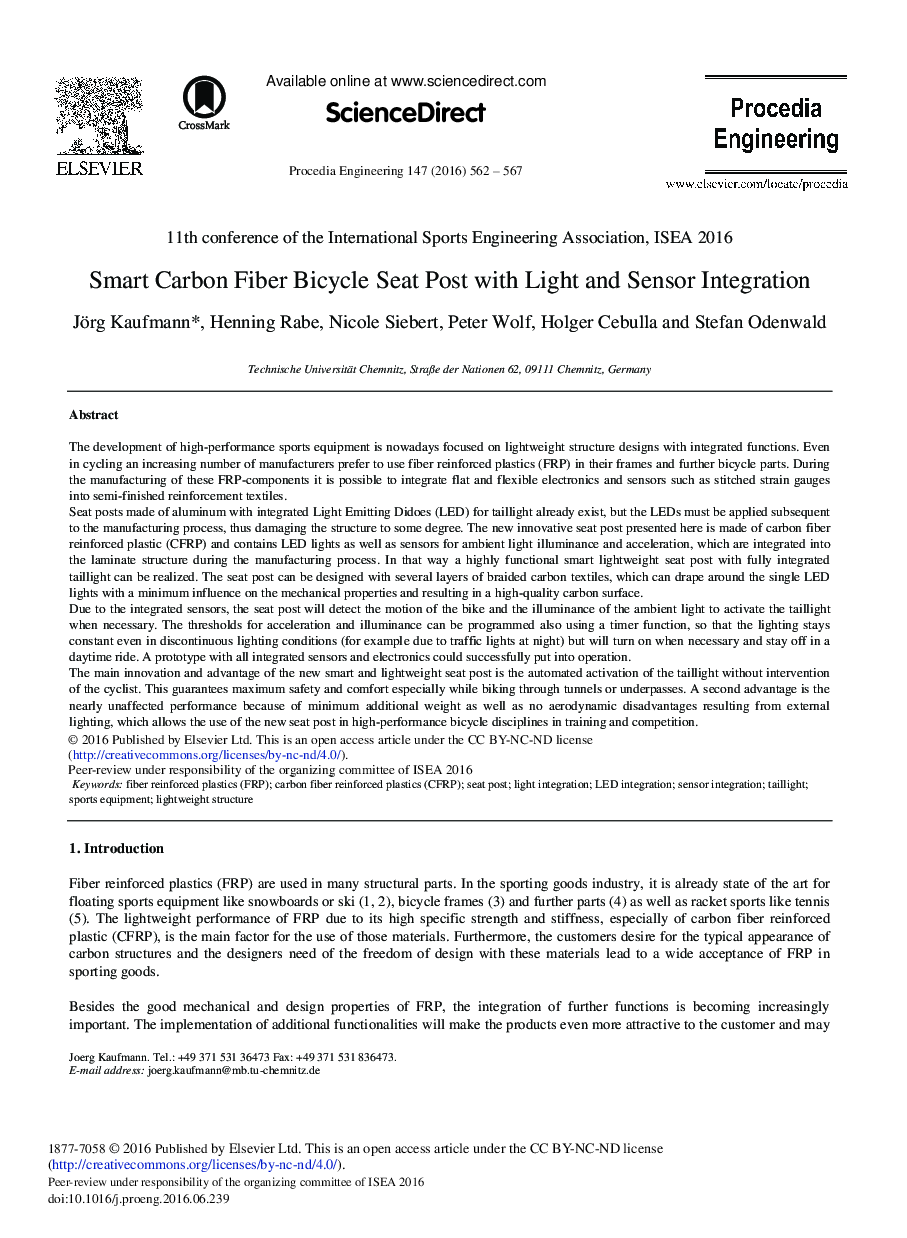| Article ID | Journal | Published Year | Pages | File Type |
|---|---|---|---|---|
| 853442 | Procedia Engineering | 2016 | 6 Pages |
The development of high-performance sports equipment is nowadays focused on lightweight structure designs with integrated functions. Even in cycling an increasing number of manufacturers prefer to use fiber reinforced plastics (FRP) in their frames and further bicycle parts. During the manufacturing of these FRP-components it is possible to integrate flat and flexible electronics and sensors such as stitched strain gauges into semi-finished reinforcement textiles.Seat posts made of aluminum with integrated Light Emitting Didoes (LED) for taillight already exist, but the LEDs must be applied subsequent to the manufacturing process, thus damaging the structure to some degree. The new innovative seat post presented here is made of carbon fiber reinforced plastic (CFRP) and contains LED lights as well as sensors for ambient light illuminance and acceleration, which are integrated into the laminate structure during the manufacturing process. In that way a highly functional smart lightweight seat post with fully integrated taillight can be realized. The seat post can be designed with several layers of braided carbon textiles, which can drape around the single LED lights with a minimum influence on the mechanical properties and resulting in a high-quality carbon surface.Due to the integrated sensors, the seat post will detect the motion of the bike and the illuminance of the ambient light to activate the taillight when necessary. The thresholds for acceleration and illuminance can be programmed also using a timer function, so that the lighting stays constant even in discontinuous lighting conditions (for example due to traffic lights at night) but will turn on when necessary and stay off in a daytime ride. A prototype with all integrated sensors and electronics could successfully put into operation.The main innovation and advantage of the new smart and lightweight seat post is the automated activation of the taillight without intervention of the cyclist. This guarantees maximum safety and comfort especially while biking through tunnels or underpasses. A second advantage is the nearly unaffected performance because of minimum additional weight as well as no aerodynamic disadvantages resulting from external lighting, which allows the use of the new seat post in high-performance bicycle disciplines in training and competition.
